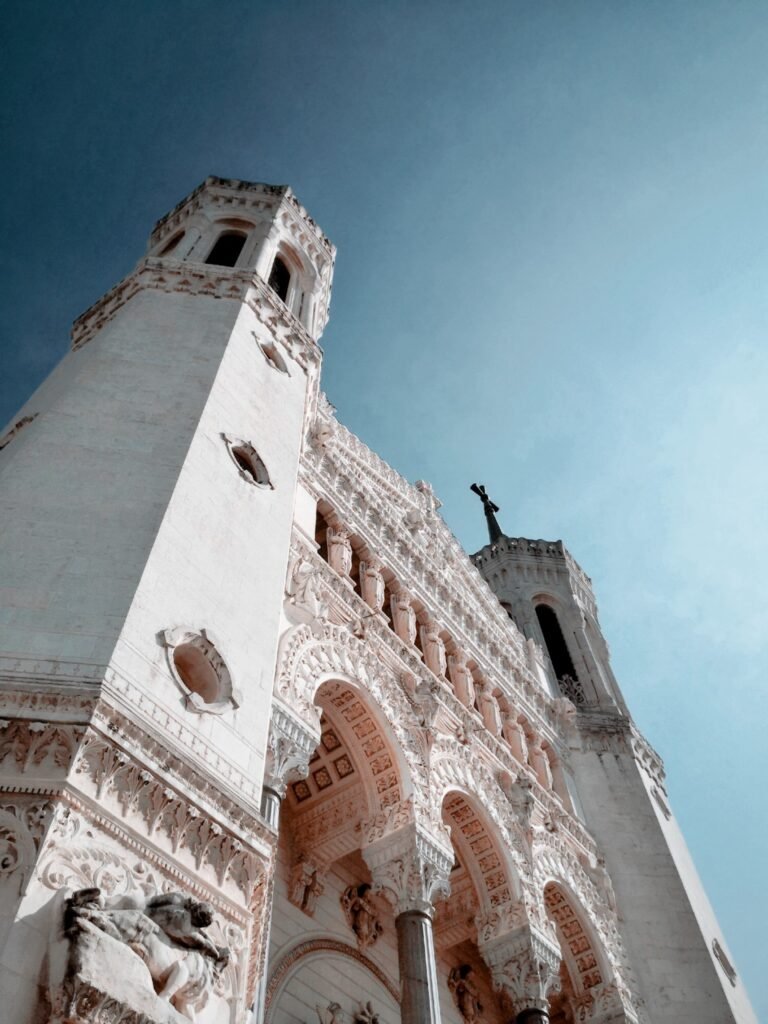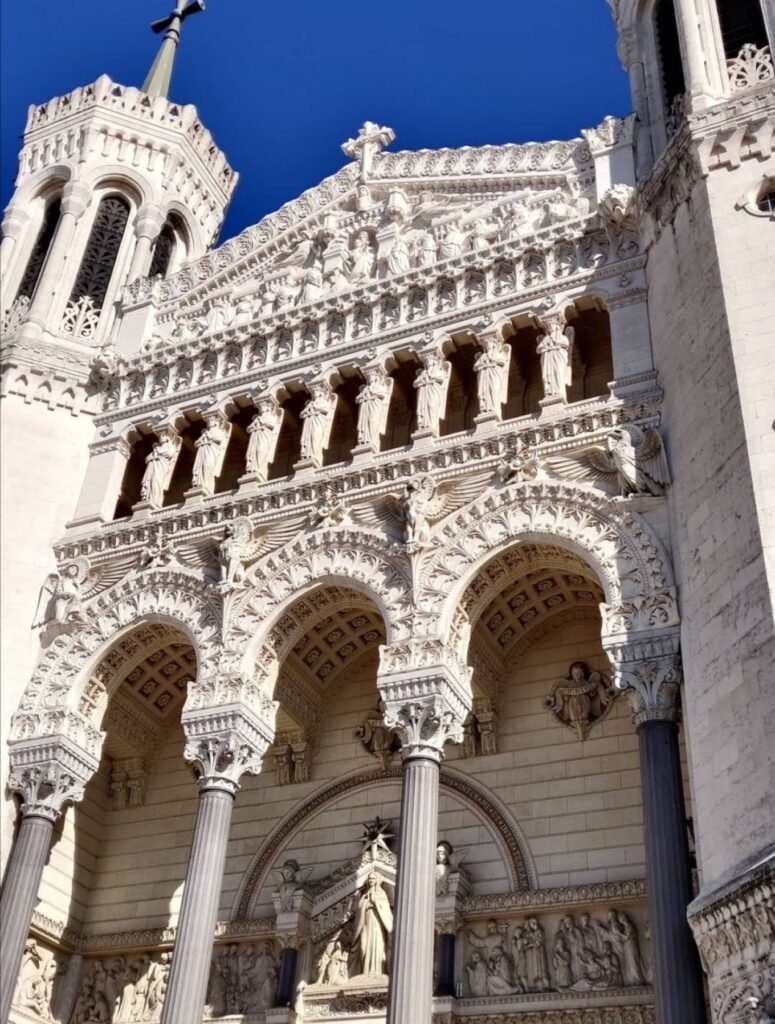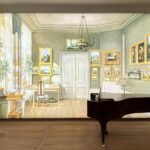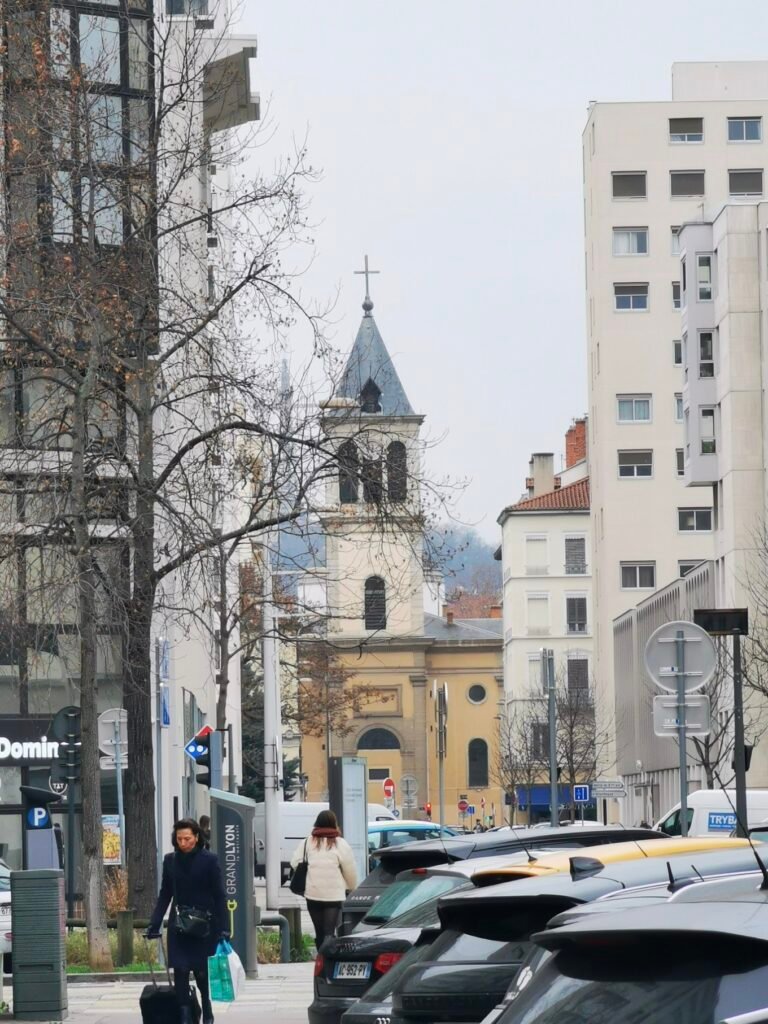
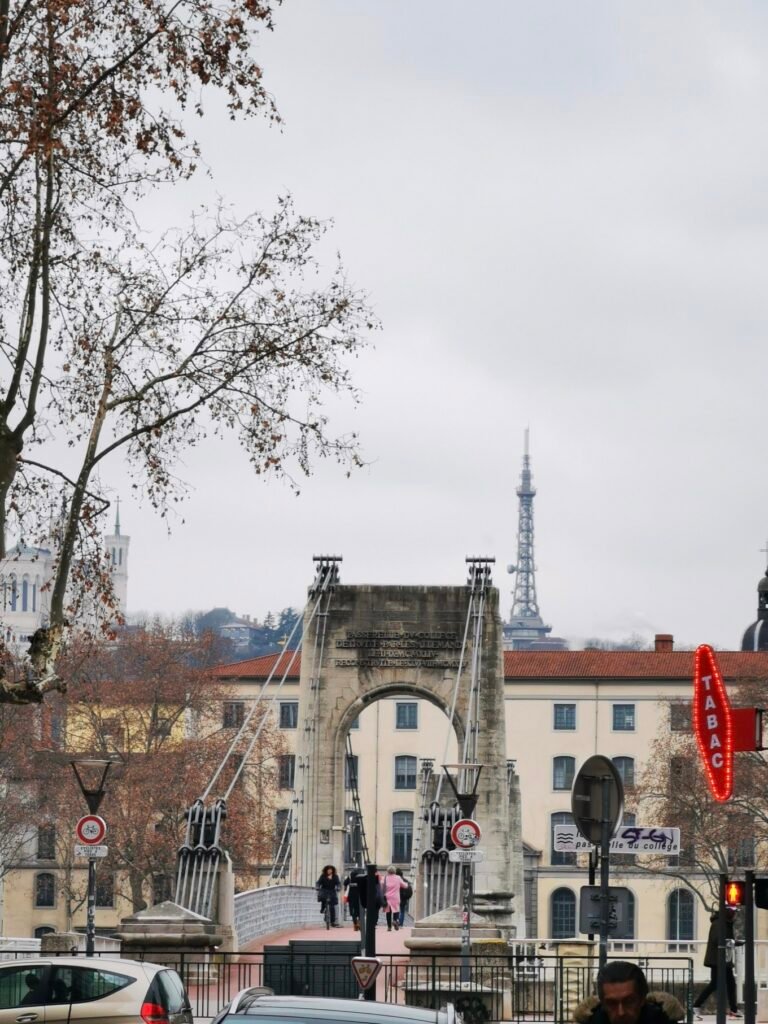
Crossing the Rhône River on the Passerelle du Collège bridge, you can feel the iron bridge swaying slightly underfoot. The view from here includes the Basilica of Notre-Dame de Fourvière perched on the hilltop.
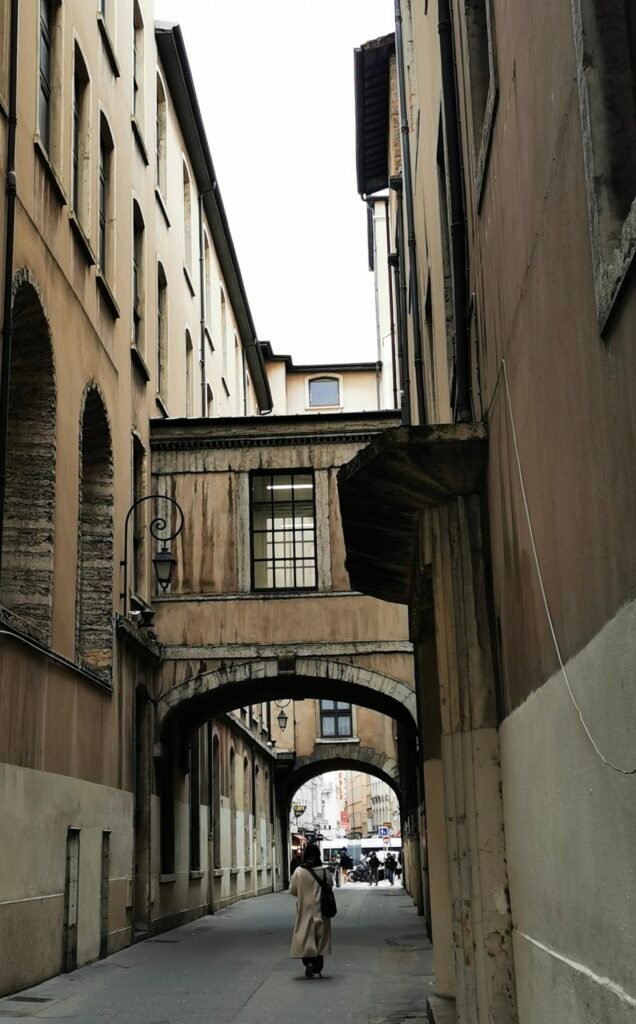
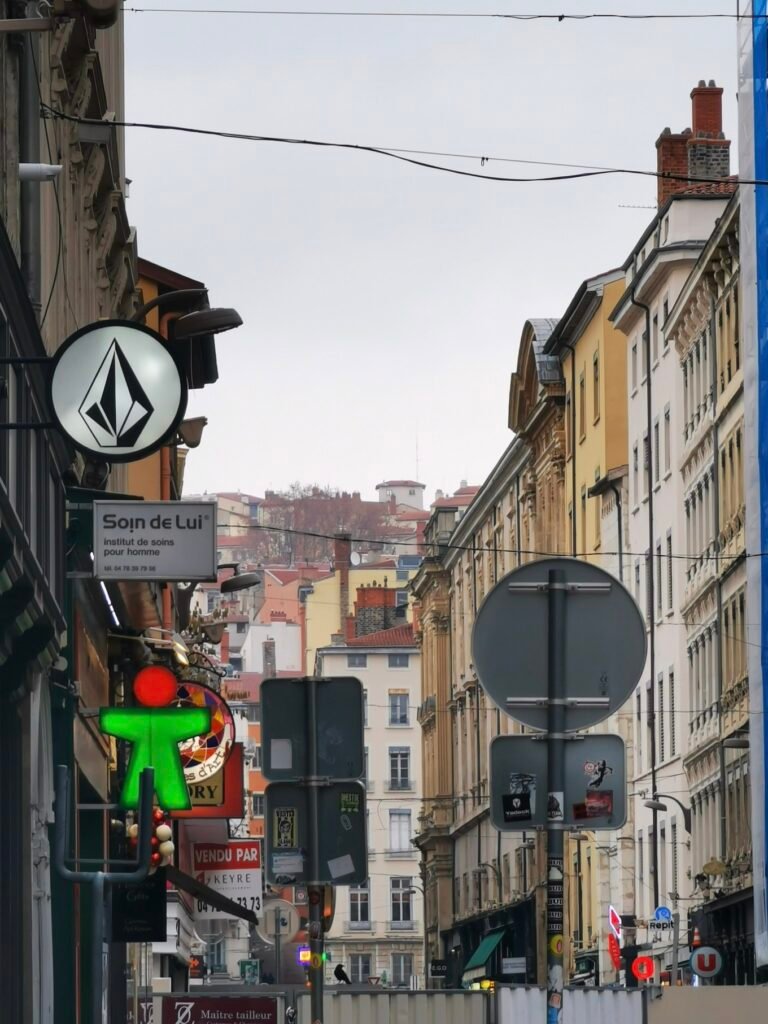
As you cross the Rhône River and enter the old town, the streets give you a strong sense of stepping into a rich historical ambiance.
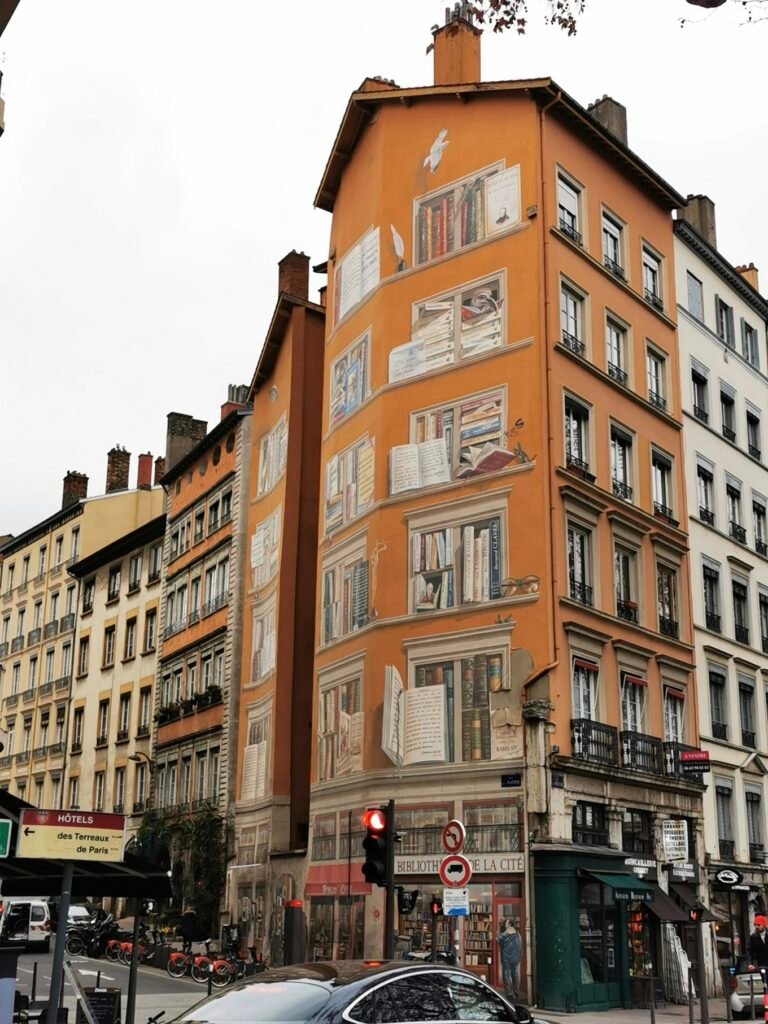
On the banks of the Rhône’s neighboring river, the Saône, you can find the mural of the Lyon Library at 6 Rue de la Platière, 69001 Lyon, France. The entire side of the building is covered with detailed illustrations of library scenes. Taking a selfie in front of the mural gives you a sense of immersion, as if you’re blending right into the artwork.
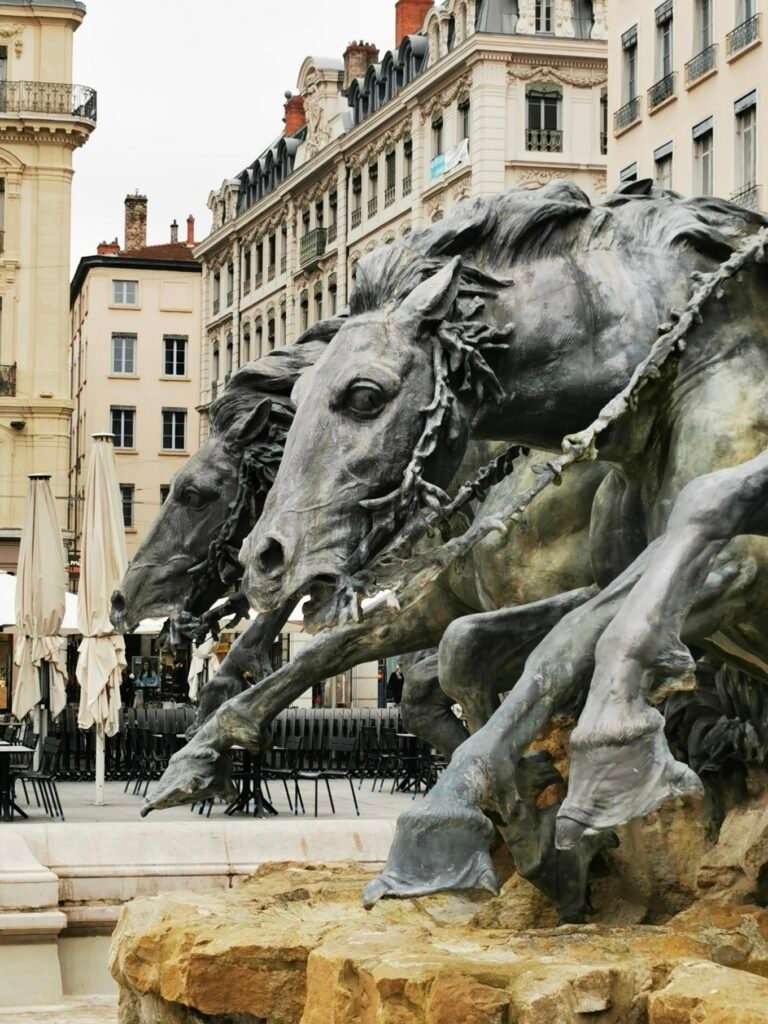
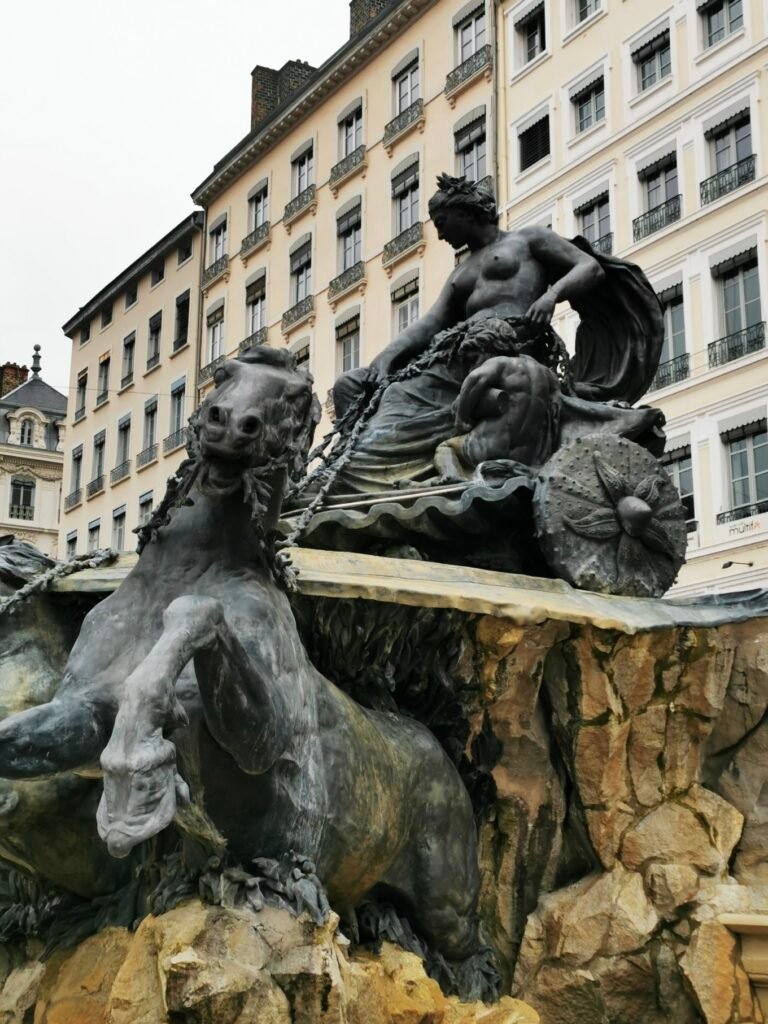
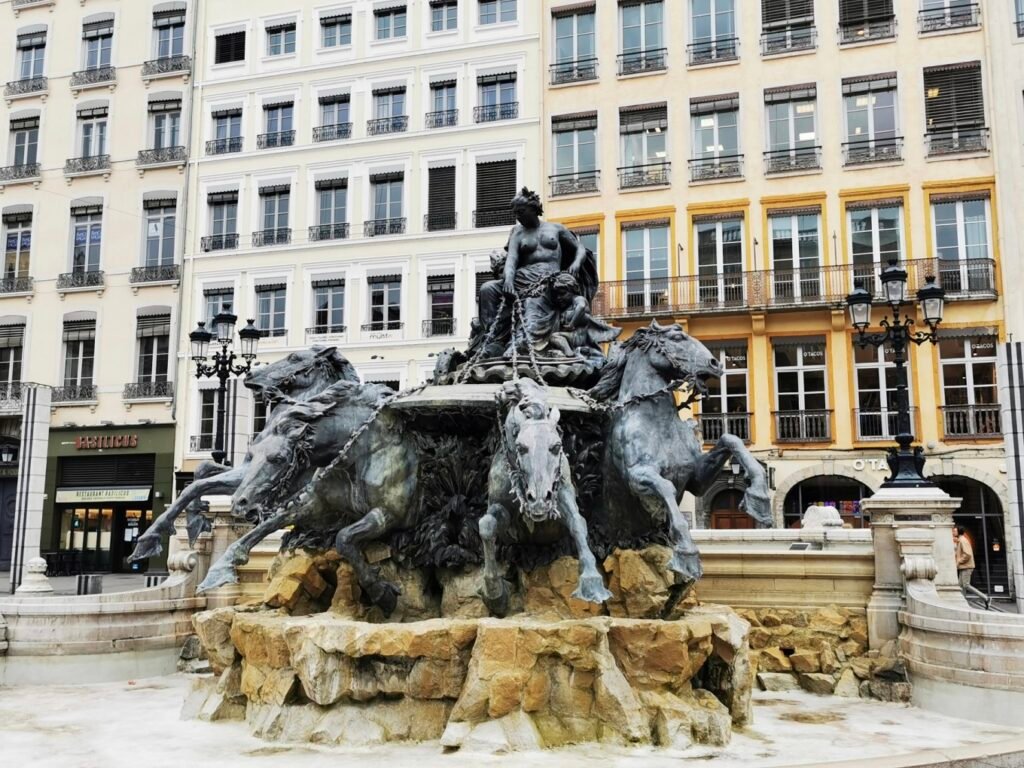
The imposing statue in the fountain features the goddess Persephone from Greek and Roman mythology, who drives a chariot pulled by four horses. Persephone, the goddess of grain and harvest, was abducted by Hades and became his queen. Hades allowed her to return to the surface for only one-quarter of the year. During the other three seasons, the earth remains barren. Only when the long winter ends does Persephone burst forth with her chariot, heralding the revival of nature, the flow of the fountains, and the arrival of spring. The sculpture captures the moment she emerges from the underworld, and the flowing fountain complements the meaning of Place des Terreaux perfectly. The rearing horses are vividly detailed, showcasing their dynamic movement with striking precision.
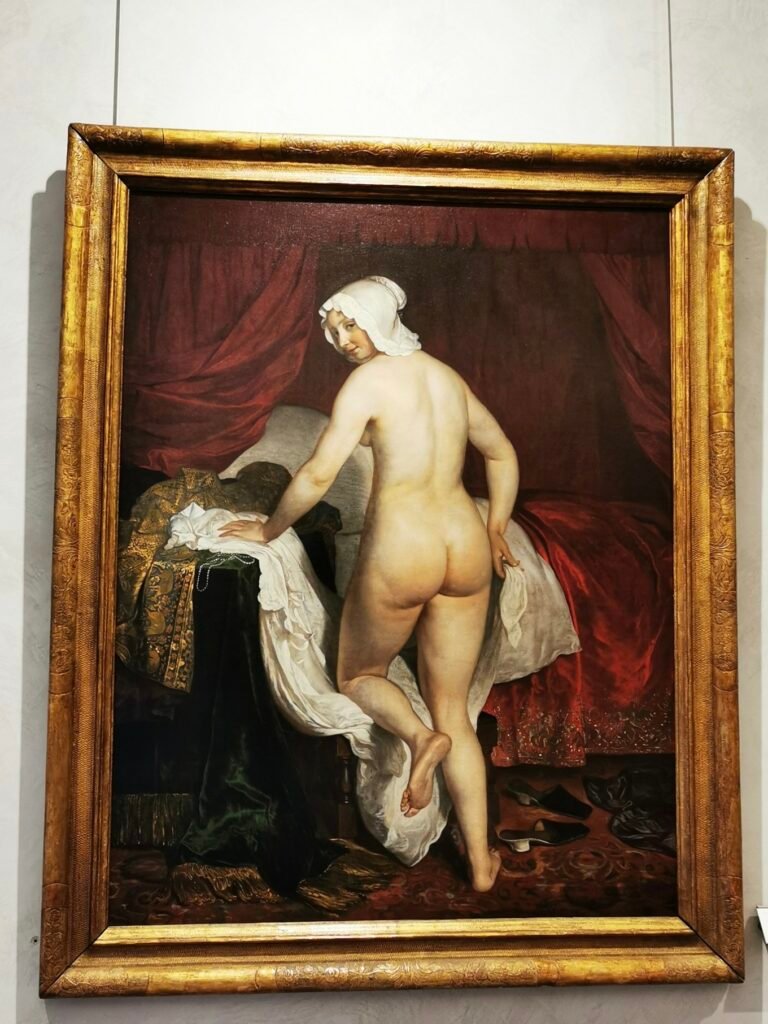
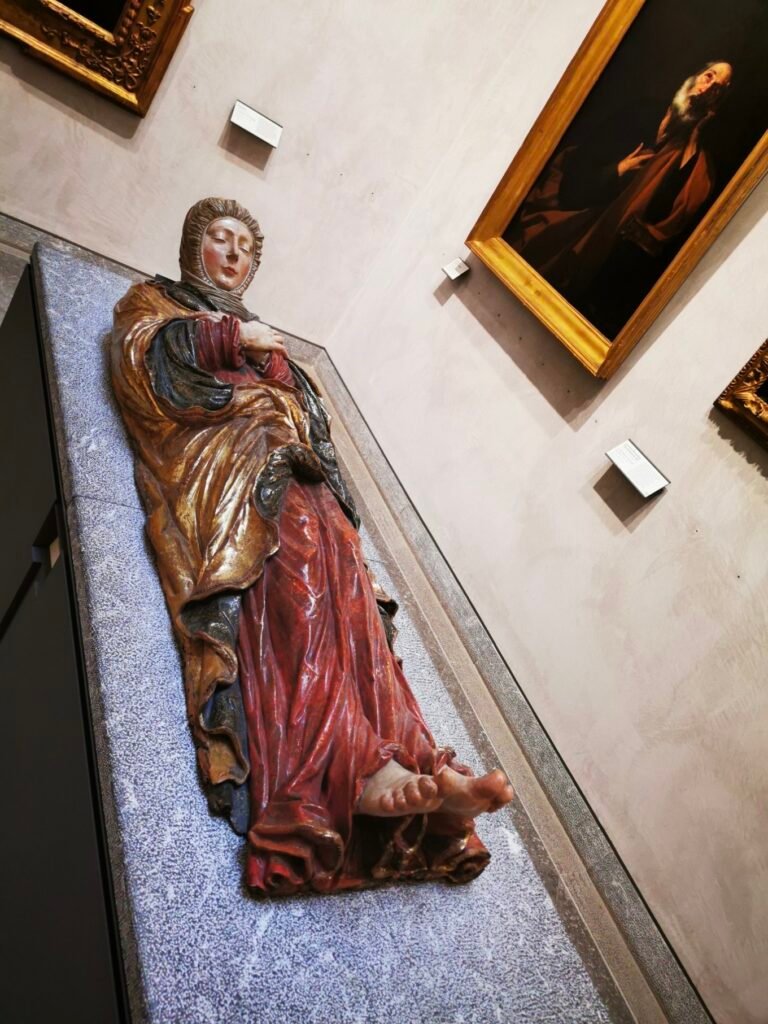
The Lyon Museum of Fine Arts is one of the top ten art museums in the world. Founded in 1801, it currently houses over 60,000 works, primarily focusing on European paintings from the 14th to the 20th centuries. The museum also holds ancient Egyptian artifacts, as well as 18th- and 19th-century sculptures.
Notable works in its collection include Tintoretto’s “Danaë” from the 16th-century Venetian school, Guido Reni’s “The Assumption of the Virgin” from 17th-century Italy, and Edgar Degas’ “Ballet Dancers on Stage” from 19th-century France.
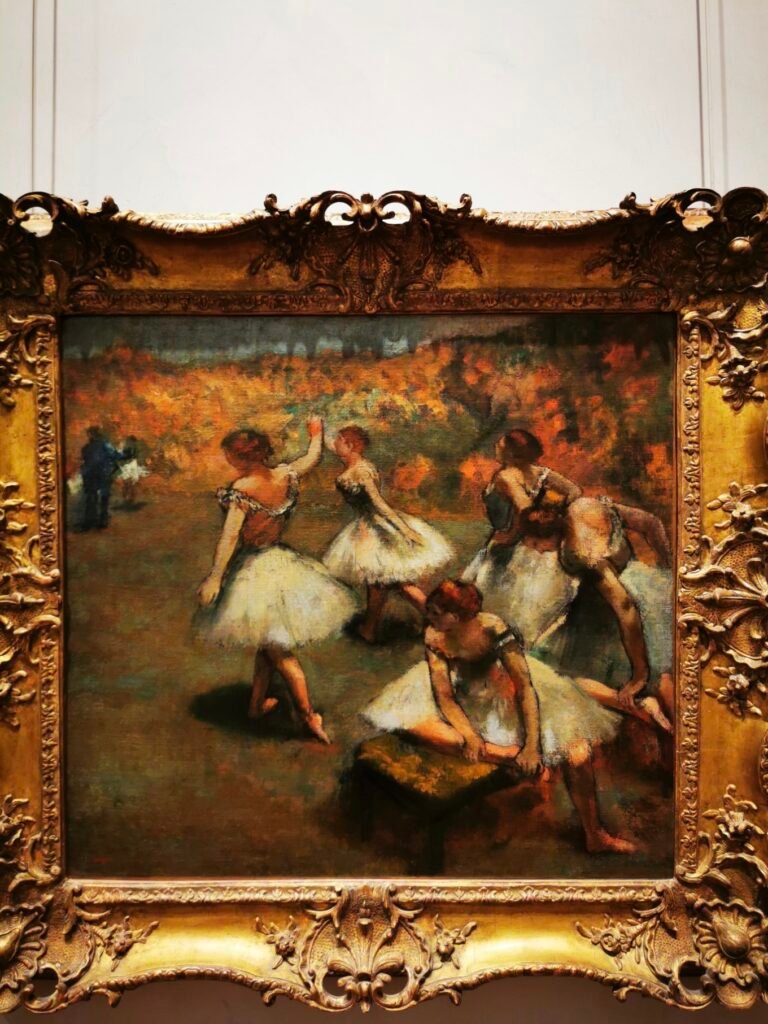
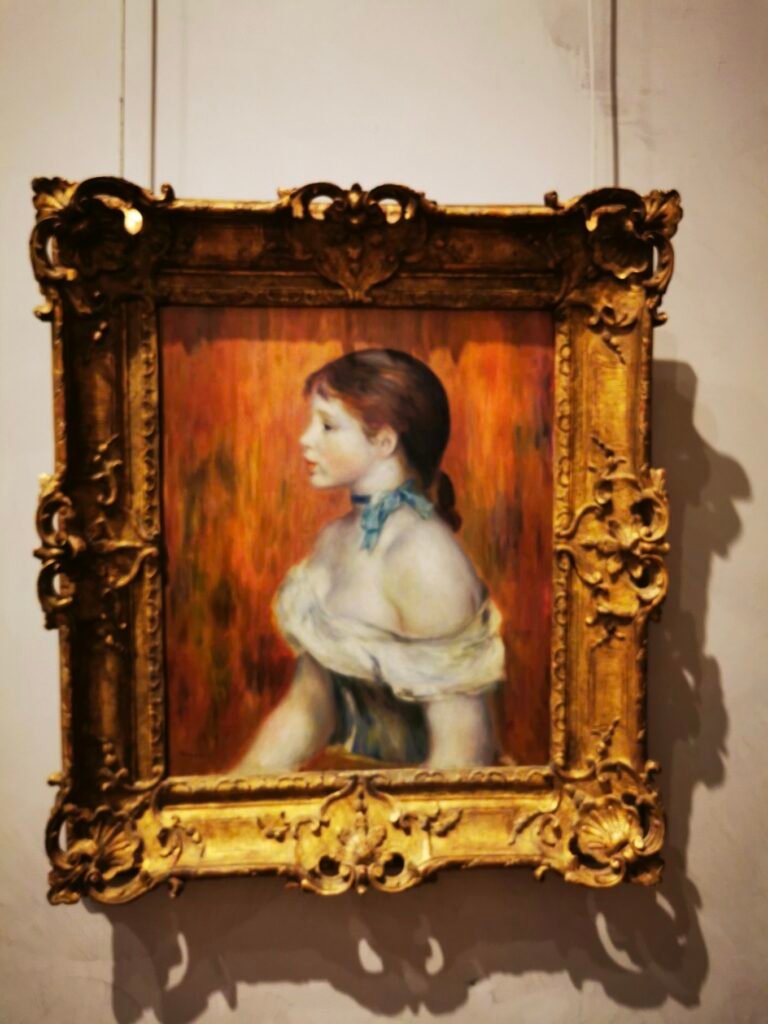
Degas’ “Ballet Dancers on Stage” reflects the painter’s deep fascination with the world of ballet. Throughout his Impressionist works, he portrayed numerous dancers, capturing them in various poses—standing, sitting, rehearsing, or performing. Each painting preserves fleeting moments of beauty on stage.
Degas did not only depict the elegance of dancers in performance but also revealed the demanding rehearsals behind the scenes. His paintings express his respect and admiration for these performers, recognizing that their grace on stage is achieved through untold hardships. Through his art, Degas aimed to convey that watching a performance is not merely about enjoying a spectacle—it is about appreciating both the brilliance on stage and the relentless effort behind it.
Lyon – Paul Bocuse Food Hall
If you come to Lyon, this is an absolute must-visit destination.
Lyon – Paul Bocuse Market (Halles de Lyon-Paul Bocuse) is a symbol of Lyon’s and France’s gastronomy. Located in Lyon’s 3rd district, it spans 13,500 m², housing around 60 shops and restaurants.
Paul Bocuse (February 11, 1926 – January 20, 2018), also known as “Monsieur Paul,” was a renowned French chef born in Lyon. He was one of the pioneers of the “Nouvelle Cuisine” movement and founded a culinary school in 2004. Bocuse’s restaurant in Lyon, L’Auberge du Pont de Collonges, held three Michelin stars from 1965 until 2019, but was downgraded to two stars in January 2020.
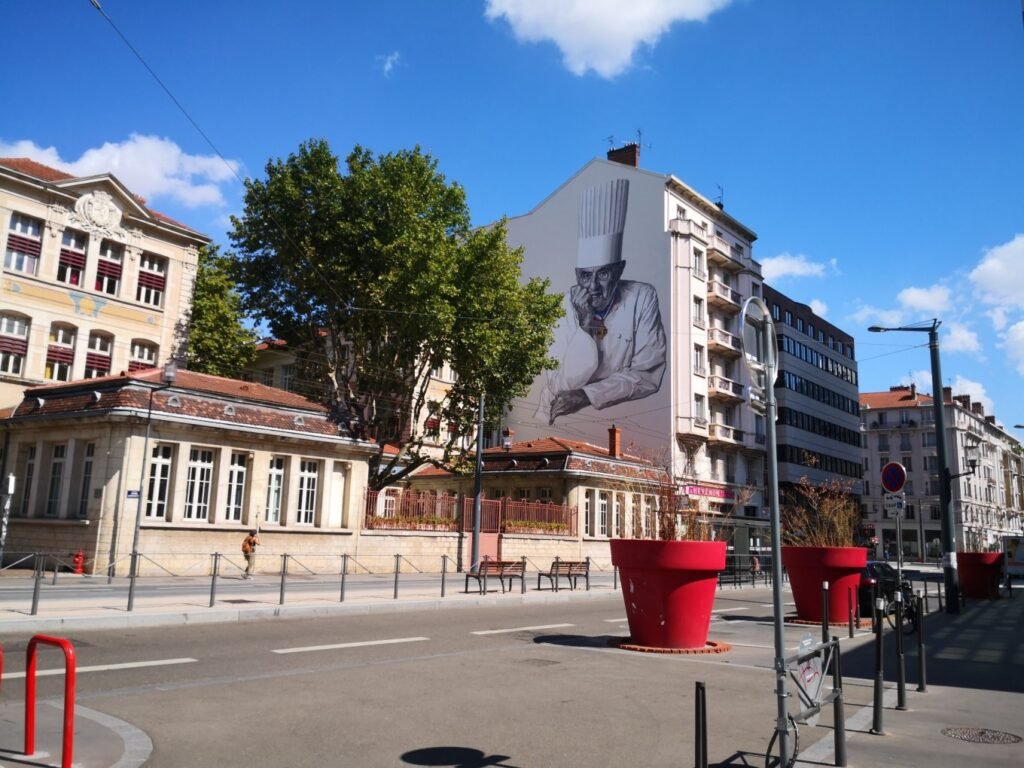

We dined at Ecailler Cellerier restaurant. The seafood was exceptionally fresh, all sourced from French producers.
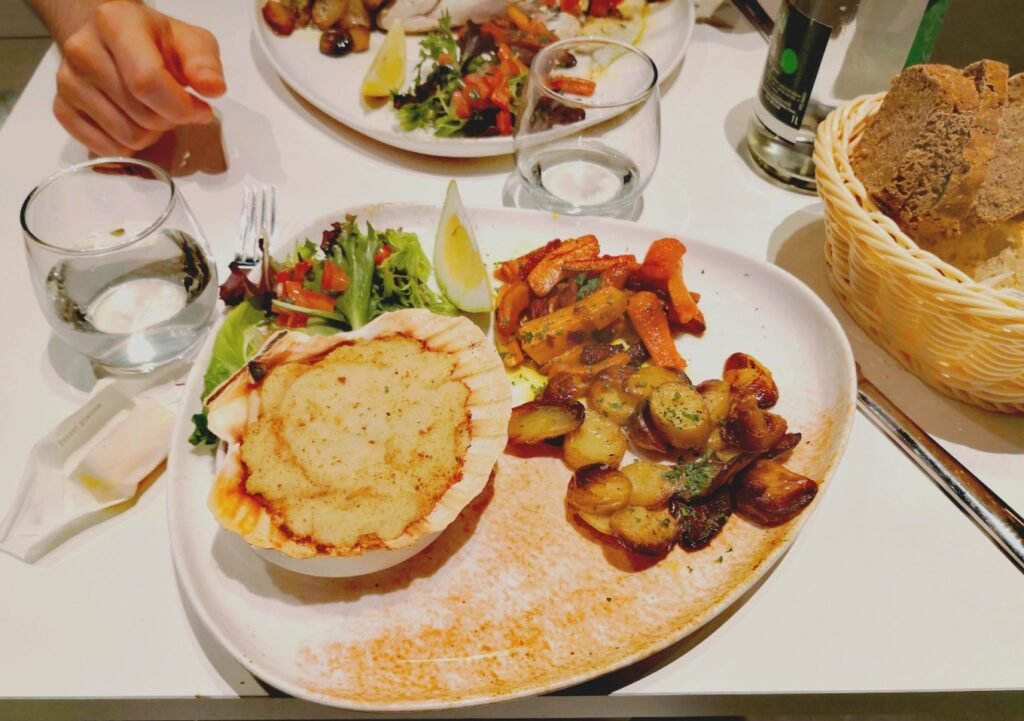
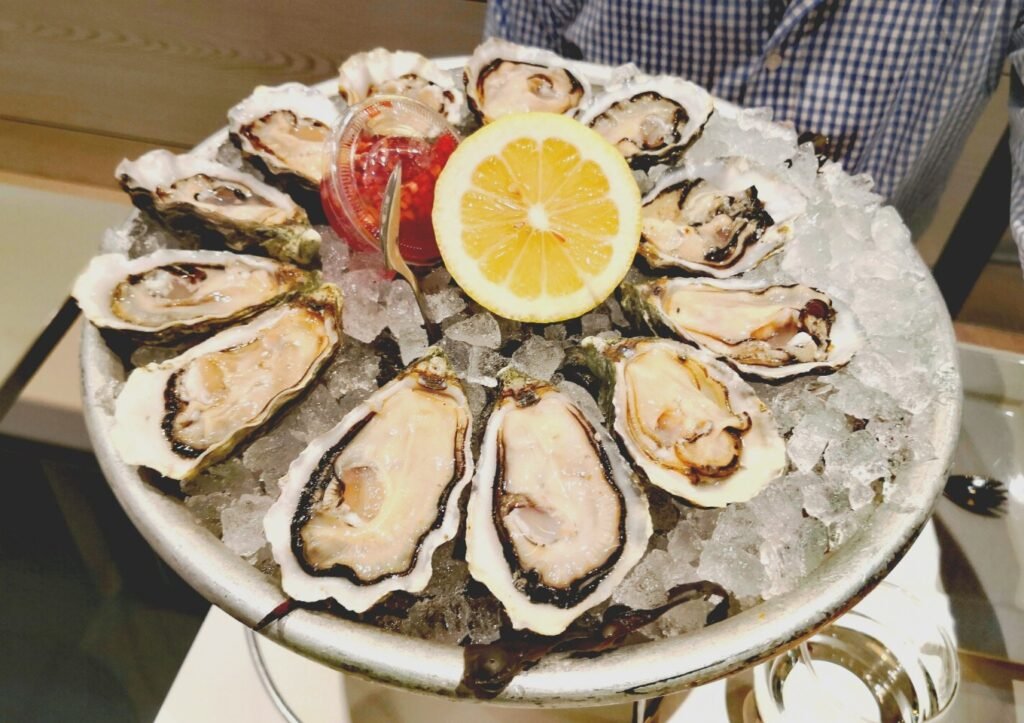
Saint-Nizier Church
The Saint-Nizier Church (Église Saint-Nizier) is located in the city center of Lyon, just north of Jacobin Square.
In the 5th century, the 19th bishop of Lyon built a basilica on the ruins to house the relics of martyrs tortured in 177 AD, naming it the “Church of the Holy Apostles.” In the 6th century, several bishops were buried in the church, including the 28th bishop, Saint Nizier. His relics attracted many believers, as he was said to have witnessed miracles, and thus the church was named after him.
The church features two distinct spires: one from the 15th century and another from the 19th century. The external sculptures and statues are both intricate and majestic, balancing delicate craftsmanship with grandeur.
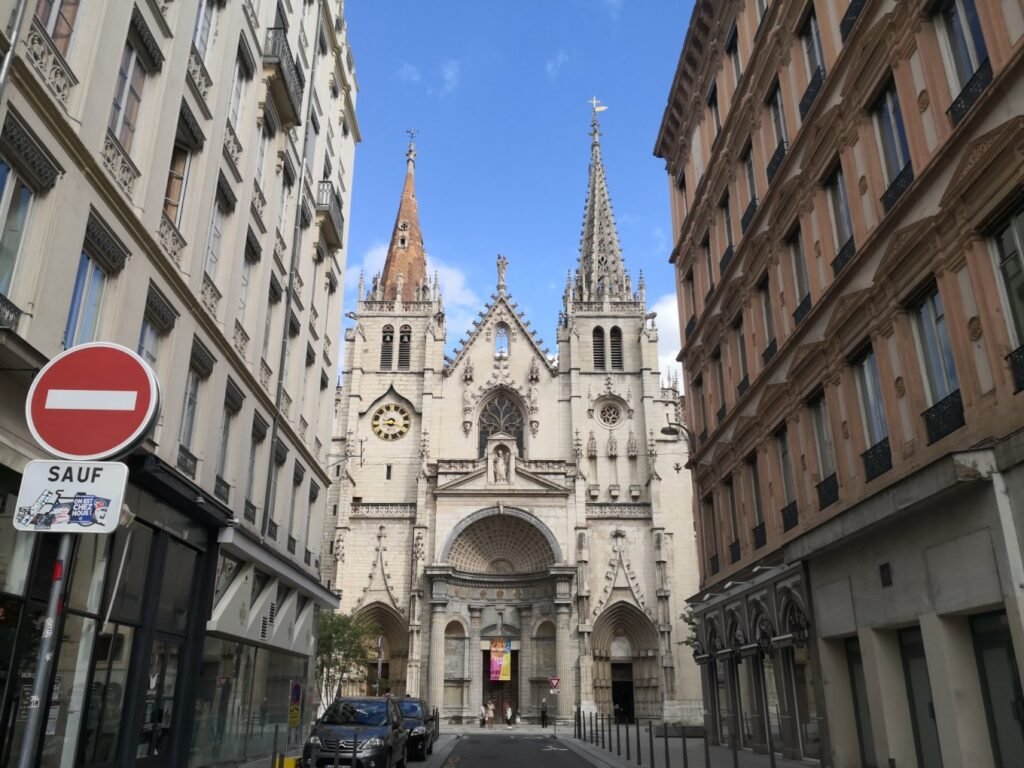
Saint-Jean Cathedral
The Saint-Jean-Baptiste Cathedral in Lyon (Cathédrale Saint-Jean-Baptiste de Lyon) is a Roman Catholic church. It was founded by Lyon’s earliest bishops, Pothinus and Irenaeus. The cathedral is also referred to as “Primatiale” because, in 1079, the pope granted the Archbishop of Lyon the title of “Primate of Gaul,” making him the highest-ranking archbishop in France.
The cathedral has witnessed significant historical events, such as the coronation of Pope John XXII and the grand wedding of King Henry IV of France with Queen Marie de’ Medici—events that remain celebrated in Lyon’s collective memory.
A highlight not to be missed is the 15th-century astronomical clock inside the church. Every day at noon, 2 PM, 3 PM, and 4 PM, the clock chimes, accompanied by a performance from mechanical figures within the clock.
The cathedral was built starting in the 12th century on the ruins of a 6th-century church, and its construction was completed in 1476. The interior spans 80 meters in length, 20 meters in width, and the nave rises to 32.5 meters.
Before the Basilica of Notre-Dame de Fourvière was constructed, the Saint-Jean Cathedral was Lyon’s most imposing church.
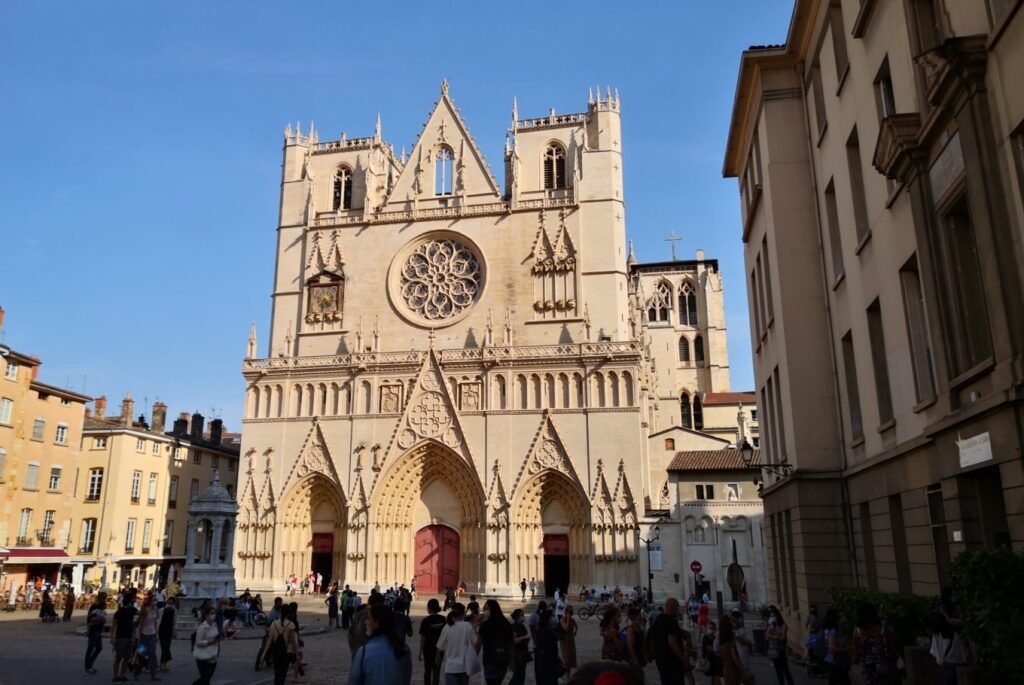

Basilica of Notre-Dame de Fourvière
The Basilica of Notre-Dame de Fourvière stands majestically atop Fourvière Hill, overlooking the city of Lyon, making it the perfect spot to enjoy panoramic views. Dedicated to the Virgin Mary, the basilica commemorates her supposed intervention in saving Lyon from the plague in 1643. In gratitude, a small chapel was built, and during the 200th anniversary in the mid-19th century, a gilded statue of the Virgin Mary was added.
Every December, Lyon hosts the “Fête des Lumières” (Festival of Lights), during which the entire city lights candles to honor the Virgin for protecting Lyon.
In 1998, the historical center of Lyon, including the basilica, was designated a UNESCO World Heritage site.
Transportation options:
- Take the metro to the “Vieux Lyon” station (Old Town Lyon), then board the funicular heading toward “Fourvière.”
- Alternatively, walk up using the Escaleras Basílica Fourvière route, which includes long stone steps in the first part and winding roads in the second half, or stroll through Parc des Hauteurs and Le Jardin du Rosaire to enjoy the surrounding greenery.
